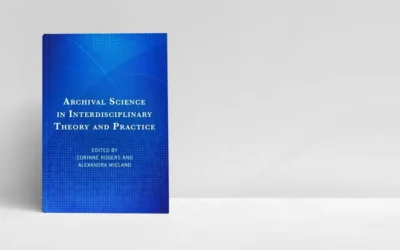Assessing the Archives Program
Margot Note
Only a fraction of an organization’s records finds their way into the archives. Archives hold non-current records with permanent historical value.
They are no longer needed during day-to-day institutional activities, but they document organizational history. Just as each organization is unique, its archives are equally distinctive. Professional archival principles and standards have been developed over decades of archival practice. However, each organization will adhere to them in its own way.
Archival Principles
Archival principles include respect des fonds and original order. The principle of respect des fonds states that records of different origins, known as provenance, be kept separate to preserve their context. For example, suppose the correspondence of the CEO is filed in her office before it is archived. In that case, the correspondence should not be interfiled with the COO’s papers once those records are transferred to the archives. The principle of original order determines that the organization and sequence of records established by the creator of the records be maintained. As an archivist begins to survey their organization’s records and decide which belong in their archives and how they are organized, these principles will help preserve history, especially when the creators of the records are no longer active or alive. If archivists cannot determine the provenance or original order, they should organize the records so that they are easily searchable, such as alphabetically or chronologically.
Assessing Archives
Before creating an archives, an organization should conduct an archival assessment. During this process, the archivist meets individually or in groups with members of each department to become more familiar with the institution’s history, activities, and programs and further explore how the staff envisions the archives being used. An organizational chart is often helpful to guide these discussions as the creation and use of records and their types and formats relate to the organization’s structure.
The archivist will also survey what materials are currently kept and how they are housed. The investigator will discuss space, staffing, and support. The issue of how digital records, both born-digital and digitally reformatted, are stored should be addressed by all staff, especially those in the IT department.
Many archival assessments reveal that to establish the archives, the organization must formalize its record creation and retention processes and create and use a records retention schedule. An assessment will not only preserve records but can also improve current workflows and future efficiencies.
Following the preliminary assessment, the archivist prepares an assessment report for the institution that details the assessment findings and outlines a plan for moving forward. The report includes goals, including locating, preserving, and making accessible significant historical records. It may also develop preliminary record retention schedules and records management policies for archival and non-archival documents to manage the materials better. If the organization has an upcoming anniversary or other events they would like to use archived records, deadlines and goals for the events will be discussed. The report also addresses the archival program’s scalability and preservation issues.
A Comprehensive Survey
Once the organization has consulted with an archivist, conducted a preliminary assessment, reviewed recommendations, and committed to establishing an archival program, the archivist’s next steps could entail a comprehensive survey of current holdings. The preliminary assessment’s initial records survey may suffice if the organization is small. However, suppose the company is large or old. In that case, a more comprehensive survey may be in order and is required for specific preservation grants. During the survey process, the archivist works closely with the archives committee to review and make notes of existing records and their locations.
Margot Note
Margot Note, archivist, consultant, and Lucidea Press author is a regular blogger, and popular webinar presenter for Lucidea, provider of ArchivEra, archival collections management software for today’s challenges and tomorrow’s opportunities. Read more of Margot’s posts here.
Never miss another post. Subscribe today!
Similar Posts
Ensuring Long-Term Access to Digital Archives
Long-term preservation is essential to ensure digital archives remain accessible and usable.
5 Best Practices for Personal Digital Archiving
Archivists have developed best practices for organizing and maintaining personal digital archives, safeguarding digital legacies for future generations.
Interview with the Editors: Wieland and Rogers on Interdisciplinary Archival Science
Alexandra Wieland and Corinne Rogers co-edited Archival Science in Interdisciplinary Theory and Practice. My interview with them is below.
The Importance of Personal Digital Archiving (Plus Steps to Get Started)
Archivists often help individuals manage and preserve digital files of personal significance.




Leave a Comment
Comments are reviewed and must adhere to our comments policy.
0 Comments